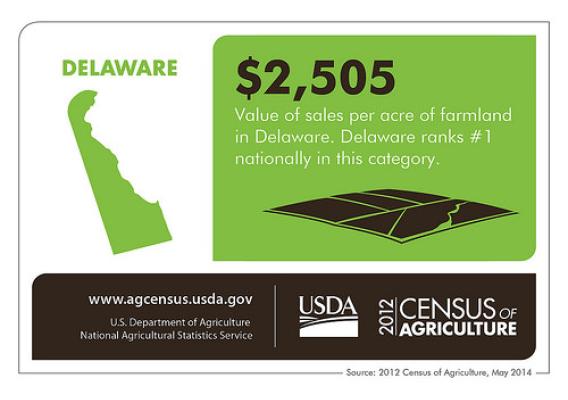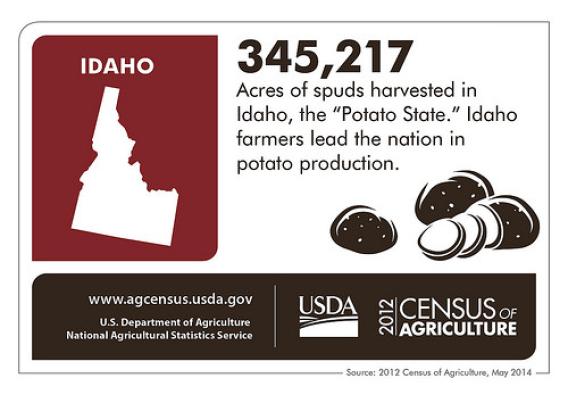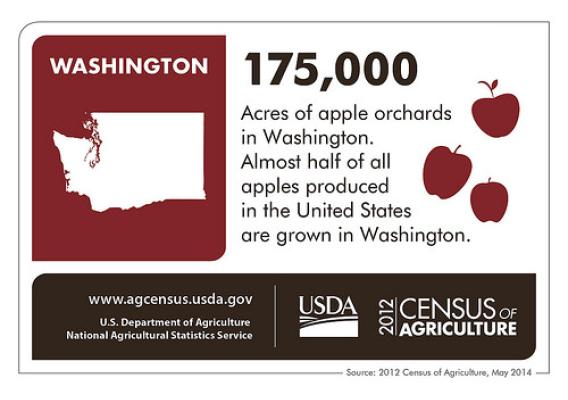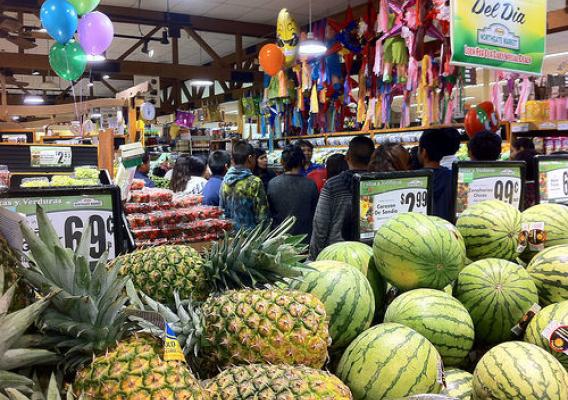The Census of Agriculture is the most complete account of U.S. farms and ranches and the people who operate them. Every Thursday USDA’s National Agricultural Statistics Service will highlight new Census data and the power of the information to shape the future of American agriculture.
When it comes to potatoes, Idaho is #1. Results of the 2012 Census of Agriculture confirmed it. According to the census, Idaho farmers led the United States in acres of potatoes harvested, at 345,217 acres. And believe it or not, this was done by only 794 farms. On these farms, 58 percent of the potato harvested acres were for the fresh market and 42 percent were for processing.
Of course, the other parts of our agriculture are no small potatoes either. Overall, in 2012 we had 24,816 farms in our state, and our farmers sold more than $7.8 billion worth of agricultural products. Nearly a third of that amount – $2.3 billion – came from milk sales. Only three states, California, Wisconsin, and New York, had more milk sales than Idaho. Idaho’s Gooding County ranked fourth in the nation for milk cow inventory. The 2012 census counted nearly 179,000 head of milk cows there.









